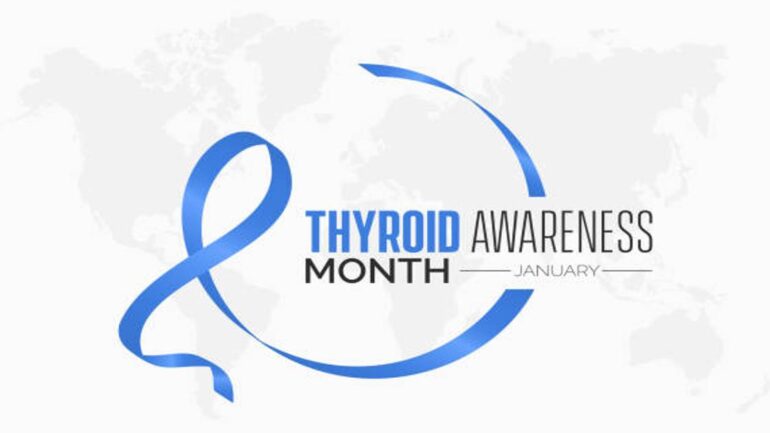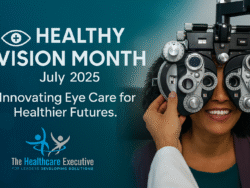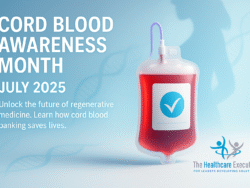Thyroid Awareness Month 2025: What Healthcare Leaders Should Be Watching

- Posted by Greg Wahlstrom, MBA, HCM
- Posted in Health Observance Calendar
How Hospital Strategy, Workforce Planning, and Equity Begin with Better Endocrine Care
Published: January 1, 2025
Each January, Thyroid Awareness Month serves as a powerful reminder of the need for integrated chronic disease management strategies within health systems. While often treated as a clinical footnote, thyroid dysfunction affects over 20 million Americans, disproportionately impacting women and aging populations. For healthcare executives, the implications extend beyond diagnostics and touch workforce readiness, health equity, and digital engagement. As 2025 begins, this awareness month is a strategic opportunity to align operational goals with public health priorities, especially as chronic illness continues to reshape hospital demand curves. That’s why leaders must pay close attention now.
From a workforce health perspective, undiagnosed hypothyroidism and hyperthyroidism contribute to presenteeism, burnout, and medical error risk. According to the American Thyroid Association, fatigue and impaired concentration are among the top symptoms of thyroid imbalance—symptoms that may silently undermine clinical performance. At Henry Ford Health System, wellness screenings now include thyroid panels as part of their annual executive health programs. Organizations must integrate endocrine insights into occupational health strategies, especially as workforce optimization becomes more data-driven. Consequently, early detection could save both lives and operational capital.
Equity is another lens through which thyroid care must be reevaluated. Black and Hispanic communities are significantly more likely to go undiagnosed, often due to disparities in access and follow-up adherence. At Chronic Disease Coalition, advocates emphasize that “lack of public awareness and education” drives underdiagnosis and late treatment. Health systems like NYC Health + Hospitals have responded by incorporating multilingual education and mobile screening into their primary care networks. Executive leadership must ensure culturally relevant engagement is not optional—it’s operational.
Digitally enabled care pathways can also bridge gaps in thyroid management. Remote monitoring tools and at-home TSH testing are emerging technologies that can reduce friction in the diagnostic process. Mayo Clinic recently launched a pilot program integrating these tools into endocrinology consults with favorable early results. For hospital executives, exploring digital diagnostics is not only a patient convenience issue—it’s a long-term efficiency play. By lowering in-clinic burden, health systems gain clinical bandwidth without sacrificing quality. Moreover, the digital front door must remain open year-round.
From a strategic planning perspective, Thyroid Awareness Month offers an anchor for chronic disease alignment in Q1. CEOs should task care redesign teams with evaluating how thyroid screening aligns with broader population health goals. At University Hospitals in Cleveland, thyroid protocols were embedded into hypertension and women’s health programs, resulting in a 15% increase in early detection. By integrating thyroid evaluation into bundled care strategies, organizations can streamline diagnostics while improving patient outcomes. In the long view, integration beats isolation.
Financial implications also warrant executive attention. According to data from the American Association of Clinical Endocrinology, the indirect costs of untreated thyroid disease—absenteeism, reduced productivity, and avoidable hospitalization—are growing. CFOs should consider the long-term ROI of preventive screening programs embedded within employer-sponsored plans. Advocate Health recently expanded coverage for diagnostic thyroid ultrasounds in its ACO network, anticipating reduced emergency department use over time. In a value-based care landscape, every lab result must be financially intelligent.
Thyroid health also intersects with gender equity in care delivery. Women are five to eight times more likely than men to develop thyroid disorders. Cedars-Sinai has begun targeting thyroid screening during reproductive health visits, bridging gaps between endocrinology and OB/GYN. Executives committed to equitable outcomes must embed such linkages into their strategic DEI metrics. In short, gender equity isn’t complete without endocrine inclusion.
Reputation and transparency also matter. During January, hospital communications teams have an opportunity to showcase commitments to preventive care through campaigns, blogs, and staff spotlights. At Cleveland Clinic, social media posts during Thyroid Awareness Month reached over 400,000 people in 2024. Visibility builds trust—but only if backed by operational action. Executives should coordinate with marketing and population health to ensure messaging reflects meaningful strategy.
Workforce education is an often-overlooked lever. At Sutter Health, clinical teams undergo thyroid-focused CME modules each January to refresh best practices. Hospital CMOs and CNOs should replicate this model, ensuring frontline teams are prepared to screen, refer, and educate. Executive leaders must treat continuing education as both a compliance measure and a culture amplifier. In this sense, January becomes a moment of both internal alignment and public leadership.
Finally, leaders must think beyond the month. Thyroid health is a year-round concern. As noted by the AACE, the patient journey involves lifelong management, not just episodic care. Executives should consider how health IT systems track endocrine disorders, how referral loops function, and how data flows from screening to specialist to system-level insight. Strategic leadership requires zooming out—and planning for scale. For that reason, January must be the start of a systemic conversation.
Internal Links
- Wellness as a Strategic Imperative
- The Healthcare Workforce Crisis: Executive Solutions That Actually Work
External Links
- American Thyroid Association – Thyroid Awareness Month
- About the American Thyroid Association
- Chronic Disease Coalition – Thyroid Month
- AACE – The Thyroid Patient Journey
Discover More on Nurse Wellness Leadership
If your organization is rethinking how to support clinicians with chronic condition risks, stress reduction, and preventive care access, explore our strategic analysis on nurse wellness in 2025. It outlines the leadership moves that truly make a difference.



